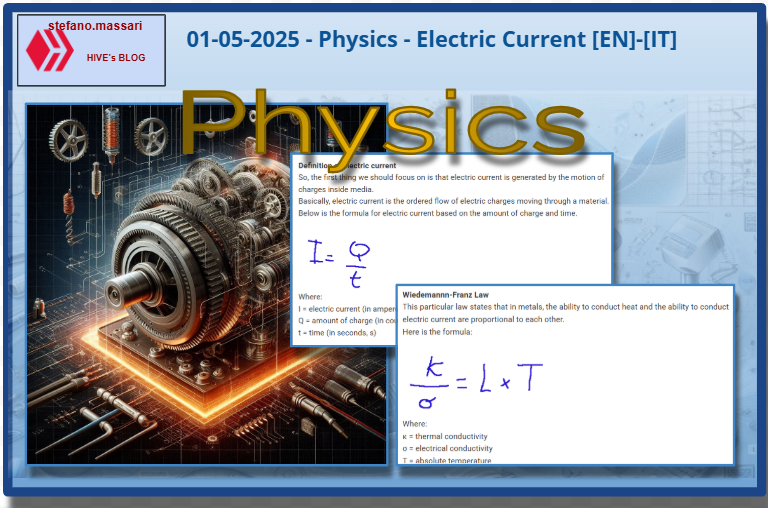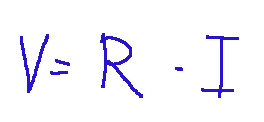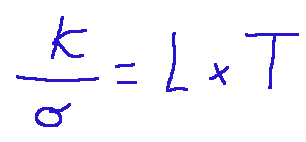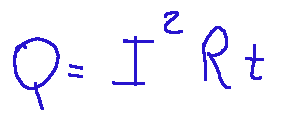01-05-2025 - Physics - Electric Current [EN]-[IT]

~~~ La versione in italiano inizia subito dopo la versione in inglese ~~~
ENGLISH

01-05-2025 - Physics - Electric Current [EN]-[IT]
With this post I would like to give a short instruction about the topic mentioned in the subject
(code notes: X_38-37-36)
Electric Current

image created with artificial intelligence, the software used is Microsoft Copilot
Definition of electric current
So, the first thing we should focus on is that electric current is generated by the motion of charges inside media.
Basically, electric current is the ordered flow of electric charges moving through a material.
Below is the formula for electric current based on the amount of charge and time.

Where:
I = electric current (in amperes, A)
Q = amount of charge (in coulombs, C)
t = time (in seconds, s)
The intensity of current
The intensity of electric current is the amount of charge that passes through the surface in the unit of time.
The mathematical formula is exactly the one we saw a moment ago.
The meaning of the formula seen previously is the following.
The more charges pass in a short time, the higher the intensity of the current.
Conservation of electric charge
Let's start from the concept that electric charges do not create or destroy themselves. The first law of electric charge defines this in a more technical way.
In fact, it states that the total amount of electric charge in an isolated system always remains constant over time. In other words, this principle identifies that electric charges can move, separate, reunite, but the total amount always remains the same.
This principle is applicable in electrical circuits, chemical processes and particle physics.
Going into detail we can also say the following.
The principle of conservation of charge states that the total current intensity through the surface equal to the total charge balance that crosses the surface in the unit of time is equal to the change in the amount of charge inside the surface in the unit of time.
Ohm's laws
Georg Simon Alfred Ohm (1979-1854) was a German physicist and mathematician.
He is known for realizing that there is a direct proportionality between the voltage applied across a conductor and the resulting electric current.
Ohm's First Law
It states that electric current is directly proportional to voltage in a system at constant temperature.
Below is the formula.

Where:
V = voltage (in volts, V)
I = current (in amperes, A)
R = resistance of the conductor (in ohms, Ω)
Ohm's Second Law
Ohm's Second Law refers to the resistance of a material.
Precisely this law states that The resistance R of a conductor is directly proportional to its length l and inversely proportional to its section A.
Where:
R = resistance (in ohms, Ω)
ρ = resistivity of the material (in ohms per meter, Ω⋅m)
l = length of the conductor
A = cross-sectional area

Electrical conductivity and resistivity
There are materials that are more suitable for the passage of electric current than others. Electrical conductivity measures how efficient a material is in allowing the passage of electric current. Basically we can say that in a material with a high electrical conductivity electrons move more easily
Resistivity is the opposite of conductivity, that is, it identifies the difficulty of a material to pass the electric current
Wiedemannn-Franz Law
This particular law states that in metals, the ability to conduct heat and the ability to conduct electric current are proportional to each other.
Here is the formula:

Where:
κ = thermal conductivity
σ = electrical conductivity
T = absolute temperature
L = Lorenz number (a constant)
This law is important because it scientifically defines something important, that is, that electrons are responsible for both the transport of electric charge and the transport of thermal energy in metals.
The Wiedemann-Franz law is still considered a fundamental law of materials physics.
NOTE: Gustav Wiedemann (1826–1899) and Rudolph Franz (1826–1902) were two German physicists and are known for their work together on the electrical and thermal properties of metals
The Joule Effect
And here we are with the famous Joule effect! Don't tell me you've never heard of the Joule effect.
The Joule effect is a physical phenomenon that describes the production of heat when an electric current flows through a conductor. Collisions between moving electrons generate thermal energy.
The mathematical formula is as follows:

Where:
Q = heat produced (in joules)
I = electric current (in amperes)
R = resistance of the conductor (in ohms)
t = time of application of the current (in seconds)
Conclusions
Electric current is like an invisible river of electrons flowing through wires. What they carry is energy. Much of modern daily life is made possible by this orderly flow of electric charges that passes through electric wires.
Question
James Prescott Joule was a very important English physicist. He made many of his discoveries when he was not yet a university professor. Did you know that he began studying the relationship between heat and mechanical work only to improve the efficiency of the machines in his father's brewery? Did you know that to help the family business he discovered the principle of conservation of energy?

ITALIAN

01-05-2025 - Fisica - Corrente elettrica [EN]-[IT]
Con questo post vorrei dare una breve istruzione a riguardo dell’argomento citato in oggetto
(code notes: X_38-37-36)
Corrente elettrica

immagine creata con l’intelligenza artificiale, il software usato è Microsoft Copilot
Definizione di corrente elettrica
Allora, la prima cosa su cui dovremmo focalizzarci è che la corrente elettrica è generata dal moto di cariche all’interno di mezzi.
Sostanzialmente, la corrente elettrica è il flusso ordinato di cariche elettriche che si muovono attraverso un materiale.
Qui di seguito espresso la formula della corrente elettrica in base alla quantità di carica e al tempo.

Dove:
I = corrente elettrica (in ampere, A)
Q = quantità di carica (in coulomb, C)
t = tempo (in secondi, s)
L’intensità di corrente
L’intensità di corrente elettrica è la quantità di carica che attraversa la superficie nell’unità di tempo.
La formula matematica è esattamente quella che abbiamo visto poco fa.
Il significato della formula vista in precedenza è il seguente.
Più cariche passano in poco tempo e più alta è l’intensità della corrente.
Conservazione della carica elettrica
Partiamo dal concetto che le cariche elettriche non si creano e non si distruggono da sole. Il primo principio della carica elettrice definisce questo in maniera più tecnica.
Esso infatti afferma che la quantità totale di carica elettrica in un sistema isolato rimane sempre costante nel tempo. In altre parole, questo principio identifica che le cariche elettriche possono spostarsi, separarsi, riunirsi, ma la somma totale rimane sempre la stessa.
Questo principio è applicabile nei circuiti elettrici, nei processi chimici e nella fisica delle particelle.
Entrando nel dettaglio possiamo dire anche quanto segue.
Il principio di conservazione della carica afferma che l’intensità di corrente totale attraverso la superficie pari al bilancio di carica totale che attraversa la superficie nell’unità di tempo sia uguale alla variazione di quantità di carica all’interno della superficie nell’unità di tempo.
Le leggi di Ohm
Georg Simon Alfred Ohm (1979-1854) è stato un fisico e matematico tedesco.
Egli è conosciuto per aver compreso che esiste una proporzionalità diretta tra la tensione applicata attraverso un conduttore e la corrente elettrica risultante.
La prima legge di Ohm
Essa afferma che la corrente elettrica è direttamente proporzionale alla tensione in un sistema a temperatura costante.
Qui di seguito la formula.

Dove:
V = tensione (in volt, V)
I = corrente (in ampere, A)
R = resistenza del conduttore (in ohm, Ω)
La seconda legge di Ohm
La seconda legge di Ohm si riferisce alla resistenza di un materiale.
Precisamente questa legge afferma che La resistenza R di un conduttore è direttamente proporzionale alla sua lunghezza l e inversamente proporzionale alla sua sezione A.
Dove:
R = resistenza (in ohm, Ω)
ρ = resistività del materiale (in ohm per metro, Ω⋅m)
l = lunghezza del conduttore
A = area della sezione trasversale

La conduttività e la resistività elettrica
Ci sono materiali che sono più adatti al passaggio della corrente elettrica rispetto ad altri. La conduttività elettrica misura quanto è efficiente un materiale nel permettere il passaggio della corrente elettrica. Sostanzialmente possiamo dire che in un materiale con un'alta conduttività elettrica gli elettroni si muovono più facilmente
La resistività è il contrario della conduttività, cioè identifica la difficoltà di un materiale a far passare la corrente elettrica
Legge di Wiedemannn-Franz
Questa particolare legge afferma che nei metalli, la capacità di condurre calore e la capacità di condurre corrente elettrica sono proporzionali tra loro.
Qui di seguito la formula:

Dove:
κ = conducibilità termica
σ = conducibilità elettrica
T = temperatura assoluta
L = numero di Lorenz (una costante)
Questa legge è importante perché definisce in maniera scientifica una cosa importante, cioè che gli elettroni sono responsabili sia del trasporto di carica elettrica sia del trasporto di energia termica nei metalli.
La legge di Wiedemann-Franz è ritenuta ancora oggi una legge fondamentale della fisica dei materiali.
NOTA: Gustav Wiedemann (1826–1899) e Rudolph Franz (1826–1902) sono stati due fisici tedeschi e sono noti per i loro lavori che hanno eseguito insieme sulle proprietà elettriche e termiche dei metalli
L’effetto Joule
Ed eccoci al famoso effetto Joule! Non ditemi che non avete mai sentito parlare dell'effetto Joule.
L’effetto Joule è un fenomeno fisico che descrive la produzione di calore quando una corrente elettrica attraversa un conduttore. Le collisioni tra gli elettroni in movimento generano energia termica.
La formula matematica è la seguente:

Dove:
Q = calore prodotto (in joule)
I = corrente elettrica (in ampere)
R = resistenza del conduttore (in ohm)
t = tempo di applicazione della corrente (in secondi)
Conclusioni
La corrente elettrica è come un fiume invisibile di elettroni che scorrono attraverso i fili. Ciò che trasportano è energia. Gran parte della vita quotidiana moderna è resa possibile da questo flusso ordinato di cariche elettriche che attraversa i cavi elettrici.
Domanda
James Prescott Joule è stato un importantissimo fisico inglese. Molte delle sue scoperte le fece quando ancora non era professore universitario. Lo sapevate che iniziò a studiare il rapporto tra calore e lavoro meccanico solo per migliorare l'efficienza delle macchine nella fabbrica di birra del padre? Lo sapevate che per aiutare l'azienda di famiglia scoprì il principio di conservazione dell'energia?
THE END
Congratulations @stefano.massari! You received a personal badge!
Wait until the end of Power Up Day to find out the size of your Power-Bee.
May the Hive Power be with you!
You can view your badges on your board and compare yourself to others in the Ranking
Check out our last posts:
Wow you always explain this topic in a very simple way that everyone can actually understand and this is so beautiful
Thank you for your kind words. We know that technically electric current is an ordered flow of electric charges that pass through a conductor, which is usually a metal wire. We can make the following comparisons: the electric current can be compared to a hydraulic system, the flow of charges can be compared to the flow of water, the electric voltage to the pressure of the water, the electric charges could be the water molecules, while the conducting wire could be the water pipe. !hiqvote
https://x.com/adenijiadeshin7/status/1917926972060995618?t=JSxSf_Yz4imEYtnkm6Q2YQ&s=19
Thank you for this explanation
Quite easy but needs to be studied twice…
Thanks for leaving a comment. Electricity is essential to the modern world we live in, it powers almost everyone. Our homes, the lighting of cities and above all, something we think little about, it powers refrigerators, essential objects for preserving food !BBH
https://x.com/jewellery_all/status/1918033668591026483
#hive
Quando leggo di linee elettriche, mi viene in mente una notizia: il presidente della Colombia ha dichiarato che farà passare il gas attraverso quelle linee. Immagina, E non è tutto. Beh, la gente li ha eletti vendendo i propri voti", e ora si lamentano. Questa è la vita.
Ti auguro una felice notte
Caspita! Mi sono informato dopo aver letto questo tuo commento. Alcuni siti riportano proprio la notizia che il governo colombiano voglia integrare gas e linee elettriche nello stesso corridoio infrastrutturale. Questo a mio avviso può presentare diversi rischi. Da quel che ho capito verrà eseguita questa idea a causa delle poche risorse economiche che ha lo Stato. !LOLZ
lolztoken.com
It was a case of age-related macaroni degeneration.
Credit: reddit
@lupega, I sent you an $LOLZ on behalf of stefano.massari
(1/8)
Farm LOLZ tokens when you Delegate Hive or Hive Tokens.
Click to delegate: 10 - 20 - 50 - 100 HP
https://x.com/lee19389/status/1918066075306000694
#hive #posh
Congratulations @stefano.massari! You received a personal badge!
Participate in the next Power Up Day and try to power-up more HIVE to get a bigger Power-Bee.
May the Hive Power be with you!
You can view your badges on your board and compare yourself to others in the Ranking
Check out our last posts:
Nice review! It's been a few years since I've even thought about all those formulas. Optics is where I used to work quite a bit with formulas in my former profession. Physics is fun, great post! I didn't know about Joule, fascinating that he came up with everything to improve a brewery, very cool!
@stefano.massari, I'm refunding 0.145 HIVE and 0.034 HBD, because there are no comments to reward.